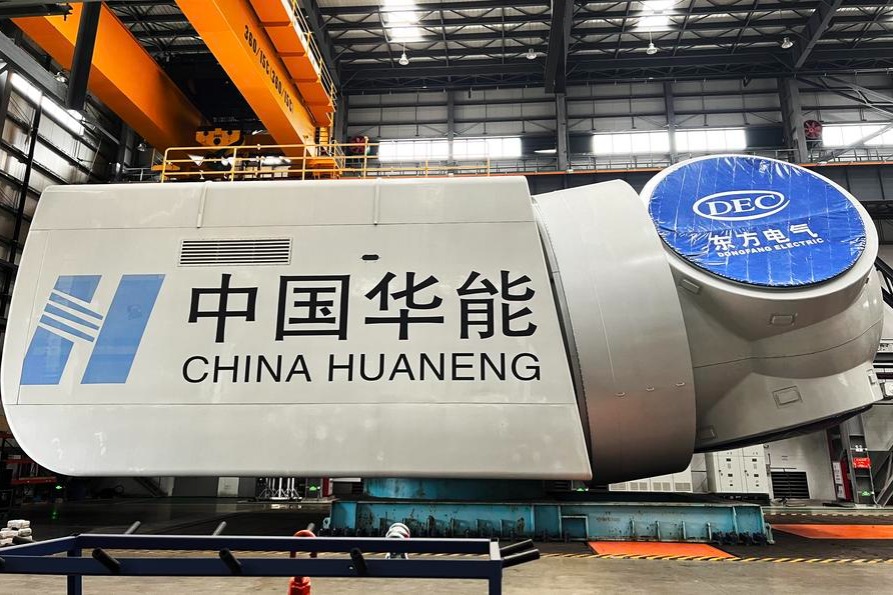How policies promote innovation in game-changing areas


For decades, trade in goods has been enabling China's rise as a global manufacturing powerhouse. The country's exporters have been supplying the world a plethora of products ranging from massive things like trains, excavators and electronics items to lifestyle stuff like clothing, toys and pillows.
Now, however, the story is changing. The thriving services sector is prompting China to innovate and expand its trade in services. This is expected to sharpen the edge of its dual-circulation paradigm, a new pattern of development that focuses on the domestic economy, but also stresses a positive interplay between domestic and international economic flows.
Compared with trade in goods, which involves the delivery of tangible products through transportation by sea, land, air and other means, trade in services has characteristics such as being green, low-carbon, high value-added and knowledge-intensive. It has a small fluctuation range, and its development tends to be relatively stable — and external environmental changes do not influence it much.
Apart from traditional segments of trade in services like travel, transportation and construction, most other transactions that do not involve the delivery of physical products can be completed through online payments. They are not limited by cross-border transportation and other external environmental factors.
Therefore, during the peak periods of global trade, the growth rate of trade in goods tends to be higher than that of trade in services. But, when global trade declines, the growth rate of trade in services tends to be higher than that of trade in goods.
To address challenges ranging from waning global goods demand to geoeconomic shocks, China has implemented various policies to promote innovation in trade in services, opened up its services sector, established a negative list management system for cross-border services trade, and made greater efforts to bolster digital trade.
Moreover, the disruption caused by the COVID-19 pandemic over the past three years has notably accelerated the shift towards digitalization worldwide, and China has been at the forefront of this trend, leveraging its 5G technology and "new infrastructure "projects to explore effective cross-border digital governance frameworks.
Unlike traditional infrastructure such as railways, roads and water conservancy, the concept of "new infrastructure" refers to critical facilities based on information technologies like 5G, AI, the industrial internet and the internet of things. IoT describes networks of devices that can connect and exchange data.
China's large population has also provided a strong foundation for the growth of its digital economy, as data have become a key economic resource. This creates opportunities for developing countries to catch up with developed economies and establish themselves as major players in the global digital economy.
After years of growth, the integration of the manufacturing and services sectors, along with improvements in the supply of services, have further contributed to the coordinated development of trade in services.
To sustain its economy, especially in trade in goods and trade in services, China has sought to join high-standard economic and trade agreements such as the Digital Economy Partnership Agreement.
The DEPA, which was signed by New Zealand, Singapore and Chile in June 2020, is the world's first agreement that coordinates policies on the digital economy, covering key sectors such as e-commerce and trade, and personal information safety.
Although this pact is relatively small in scale, China's proposed accession to this agreement would underscore the importance of cooperation in rule-making for trade in digital services and the digital economy.
The Regional Comprehensive Economic Partnership, whose implementation began at the beginning of 2022, will also help open more than 100 services to trade, including finance, telecommunications, transportation, tourism, and innovation, with a certain number of years serving as a transitional period, the General Administration of Customs said.
Mutual recognition of professional qualifications and deeper cooperation between signatory countries have also been established. This will provide greater growth opportunities for RCEP members, particularly in areas like cross-border e-commerce, online education, business exhibitions and healthcare consulting services.
China's trade deficit in services, particularly in travel services, has been a long-term concern. The pandemic has led to restrictions on cross-border mobility, resulting in a drop in China's deficit in this category in the short term.
However, with the gradual stimulation of new growth drivers in the services sector and increased export competitiveness, China's trade deficit in services is expected to gradually decrease.




































